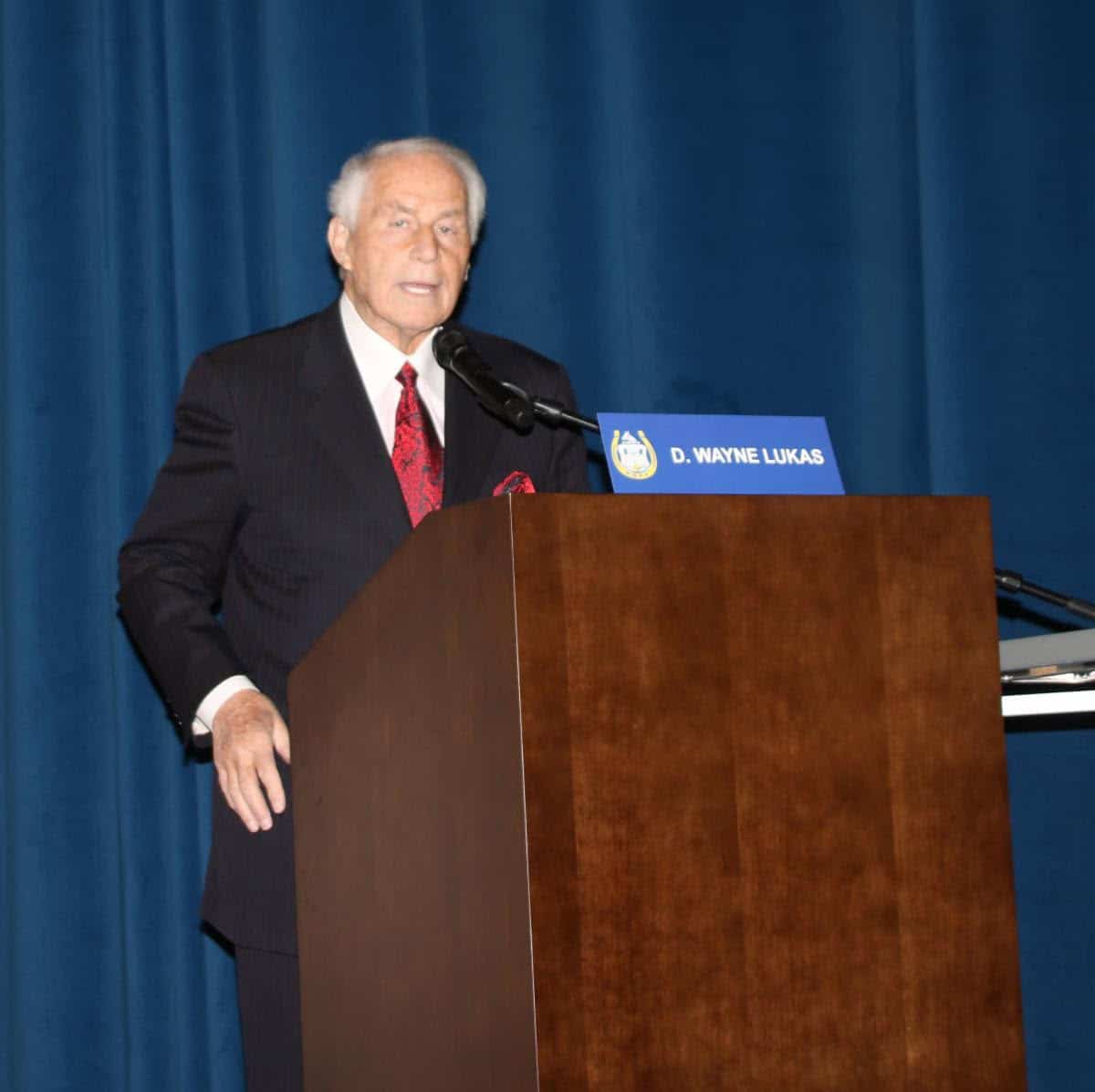Statement from Kentucky HBPA on Proposed Partial-ban of Race-day Lasix
 (press release from the Kentucky HBPA)
(press release from the Kentucky HBPA)
The Kentucky Horsemen’s Benevolent & Protective Association (KHBPA) unalterably opposes the recently-announced plan of several North American tracks, including Keeneland and Churchill Downs, to run 2-year-old races without the anti-bleeder medication Lasix in 2020 and all stakes races in 2021. The KHBPA is the recognized representatives at all five Thoroughbred tracks in the Commonwealth.
It is untenable that the majority horsemen’s organization and equine medical professionals were not consulted before a fundamental policy change — banning Lasix on race-day — was unilaterally made by the racetracks. That would have provided the opportunity to stress the efficacy of Lasix in treating exercise-induced pulmonary hemorrhage (EIPH) in racehorses. Churchill Downs racetrack president Kevin Flanery, in a meeting with horsemen did indicate a willingness to discuss the issue following the running of the Kentucky Derby.
“Frankly, it is inconceivable to many horsemen and racetrack practitioners that I have talked with that based on the credible evidence of the importance of Lasix in preventing exercise induced pulmonary hemorrhage that this is even being contemplated,” said KHBPA president Rick Hiles. “We applaud the actions of both Woodbine Entertainment Group CEO Jim Lawson and Dennis Drazin, the chairman and CEO of Darby Development LLC, which operates Monmouth Park, for basically taking a wait-and-see approach and communicating with horsemen prior to instituting such drastic measures.”
The perception that race-day Lasix is implicated in the issues at Santa Anita or any racetrack is misguided. In fact, the American Association of Equine Practitioners (AAEP), along with other credible scientists, have determined that Lasix provides the most effective treatment and prevention to controlling and/or mitigating the possible disastrous impact of EIPH in racehorses.
In the definitive South Africa study, commissioned by The Jockey Club, and authored by Paul Morley, Kenneth Hinchcliff and Alan Guthrie, three scientists with impeccable credentials, they concluded that “pre-race administration of Furosemide (Lasix) markedly decreased both the incidence and severity of EIPH in Thoroughbred race horses.”
Interestingly, the study also points out that “the challenge will be for countries such as Australia, England, Hong Kong and South Africa that do not currently permit race-day use of Furosemide, to balance the animal welfare aspect of being able to prevent or reduce the condition, i.e. EIPH, against the imperatives for drug-free racing.”
The racetracks are quick to point out that any medication policy must place the health and welfare of the equine athletes first. Yet, when proposals are presented contrary to their proclamation, one is left to question the reasoning behind the decision.
Bettors are another group that should have been consulted prior to taking such a drastic measure as eliminating race-day Lasix. Some would have you believe that this will inspire more confidence from the betting public in the sport. In reality, the reverse is true.
Stephen Crist, long-time Daily Racing Form executive and advocate for the betting public, has said that “over the past decade, I have conducted over 100 question-and-answer seminars with tens of thousands of fans and players at tracks and betting parlors across the country. The next player I meet who thinks Lasix is a major issue, or a reason not to play the races, will be the very first. Customers are not shy about voicing numerous complaints about the game, but in my experience, Lasix is not even on their radar.”
Thoro-Graph president Jerry Brown said: “My handle is seven figures a year. I’ve found that people bet when they have an opinion. The stronger the opinion, the more likely they are to bet, and the more money they will bet. There is not a single horse player I have talked with who will bet more if Lasix is banned. Things that create uncertainty hinder investment in business, and the same applies here as well, not knowing whether the reason a horse stopped last time was because he bled and whether the problem has been resolved creates uncertainty.”
The KHBPA looks forward to meaningful discussions with racetracks on behalf of the owners and trainers that we represent, along with the members of the Kentucky Horse Racing Commission and representatives of the wagering public.
— Kentucky HBPA board of directors





